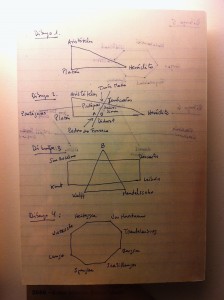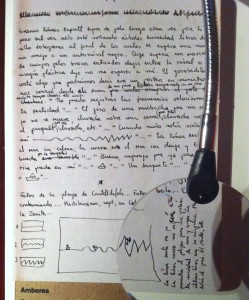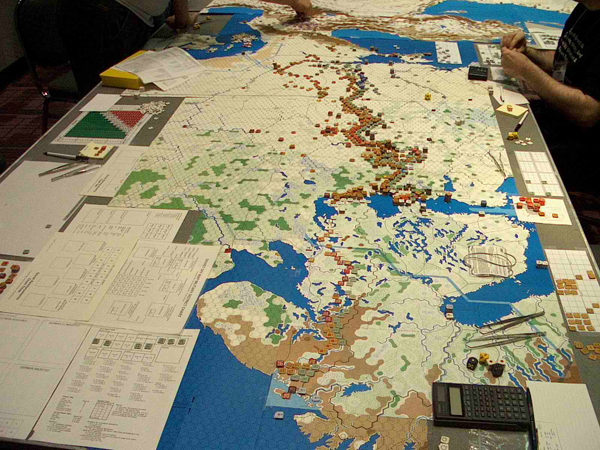UPDATE: I’ve posted Maria Serrano’s commentary about each of the images below.
The CCCB in Barcelona is currently hosting an exhibit of Bolaño’s personal effects (manuscripts, notebooks, typewriters, etc.) titled BOLANO ARCHIVE. 1977-2003.
EXPOSICIÓ // ARXIU BOLANO 1977-2003 from CCCB on Vimeo.
Additionally, the exhibit includes several audio-visual works based on Bolaño’s writing. Here’s an example:
Wallace-l lister Maria Serrano attended the exhibit in Barcelona and shares with us these pictures. Click to enlarge.
Maria says: “This image belongs to the manuscript of 2666. It’s from “The part about Amalfitano”, when Professor Amalfitano suddenly starts drawing geometric figures while his students do their work. The text in the novel reads like this: “The next day, as his students wrote, or as he himself was talking, Amalfitano began to draw very simple geometric figures, a triangle, a rectangle, and at each vertex he wrote whatever name came to him, dictated by fate or lethargy or the immense boredom he felt thanks to his students and the classes and the oppressive heat that had settled over the city. Like this:
What appears to be a map of Santa Teresa:
Tinajero’s “poem” from The Savage Detectives, but Maria notes this is actually a manuscript page from Antwerp:
Maria notes: “This page is also from Antwerp. In this case its the Postscript. It reads like this (I love this quote, I think the image it summons is very powerful): “POSTSCRIPT: Of what is lost, irretrievably lost, all I wish to recover is the daily availability of my writing, lines capable of grasping me by the hair and lifting me up when I’m at the end of my strength. (Significant, said the foreigner.) Odes to the human and the divine. Let my writing be like the verses by Leopardi that Daniel Biga recited on a Nordic bridge to grid himself with courage.”
Bolaño’s business card. He calls himself a Poet and Vagabond.
Another draft of Tinajero’s poem. Maria says: “The Savage Detectives / Cion [in Mexican Spanish sounds like “Sion”] / visual poem? By Cesarea Tinajero found in an issue of “Caborca” / that according to Lima and Belano meant / Navigation /Acta Est Fabu”.
One thing that strikes me is how clean and neat these journals are. Here are some of Madero’s drawings (claves = keys) for The Savage Detectives:
Marvin Kleinemeier also attended the exhibit and took some fantastic photos. I especially love the picture of Bolaño’s copy of The Rise and Decline of the Third Reich board game.
April 28, 2013 would have been Bolaño’s 60th birthday. The CCCB is hosting “Bolaño Day” in his honor. Here are a few ways to participate, including using the hashtag #diabolano on Twitter.










